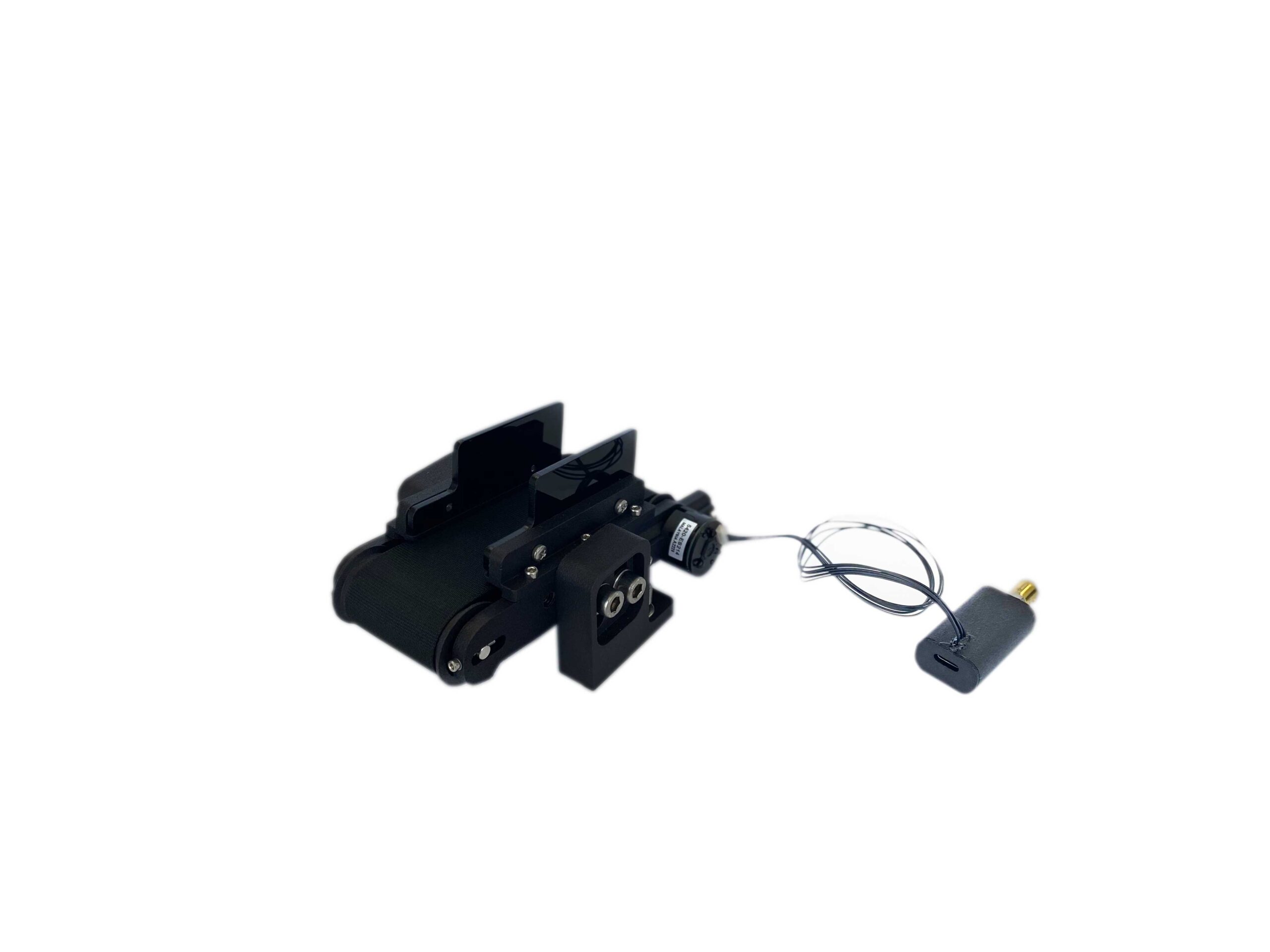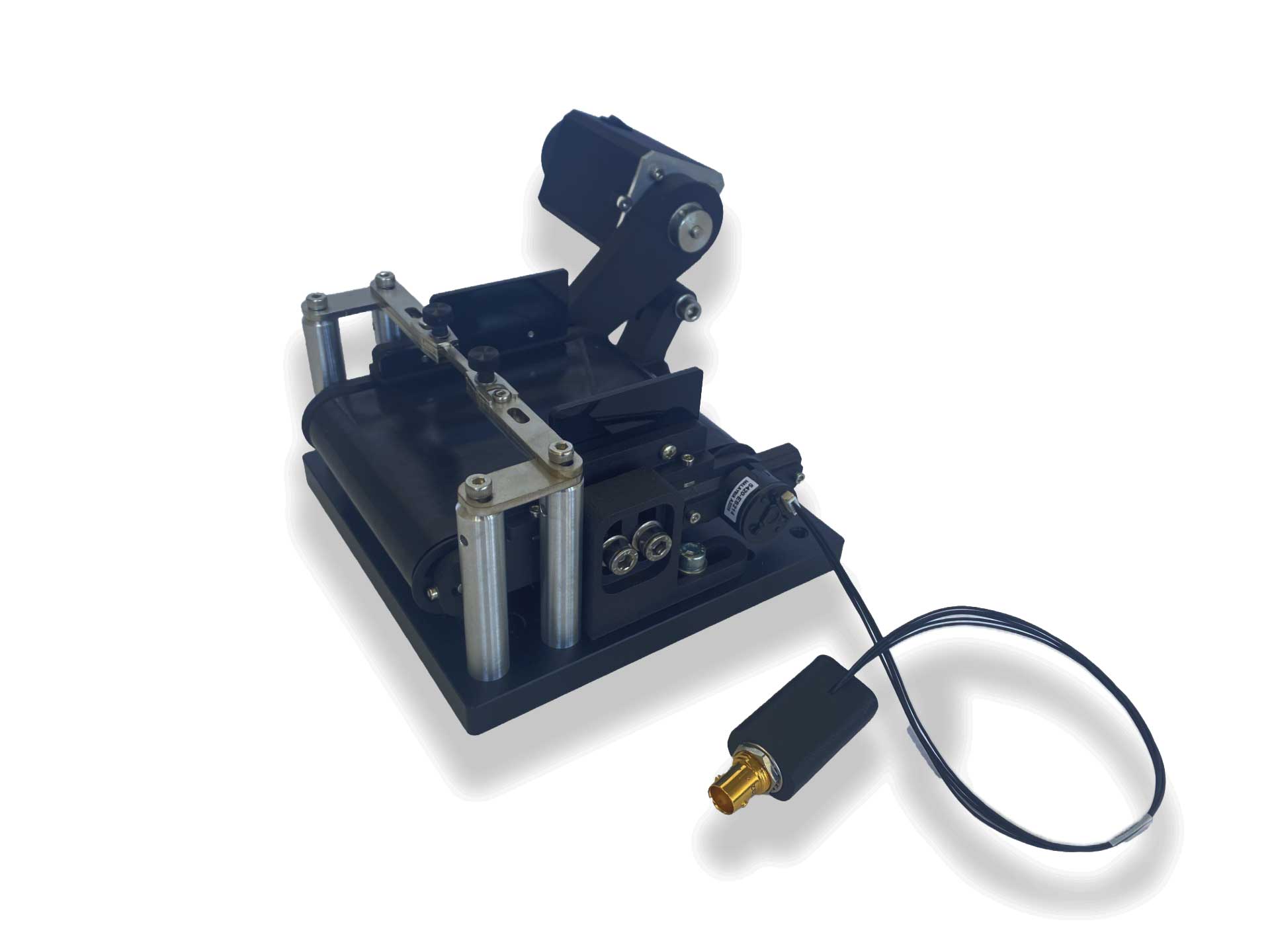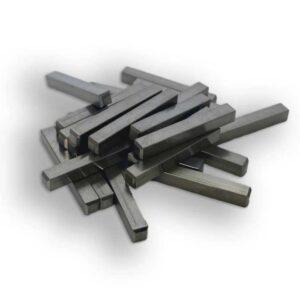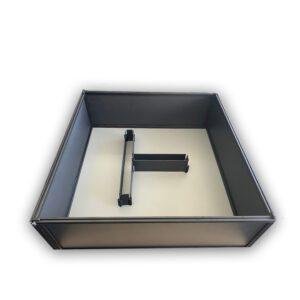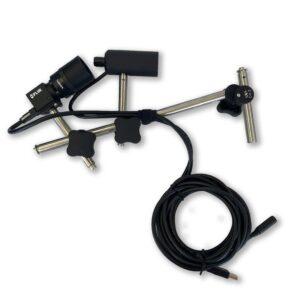Researchers can save time and resources by purchasing the pre-assembled and tested Low-Friction Rodent-Driven Belt Treadmill, originally developed by HHMI’s Janelia Research Campus. Licensed from Janelia’s innovative design, LabeoTech proudly offers this high-quality mouse treadmill, specifically engineered for behavioral neuroscience experiments. To enhance experimental versatility, we provide a variety of optional accessories tailored for mouse studies. The treadmill can be equipped with a head fixation system and/or motorized to improve training efficiency and reproducibility. Our treadmill package includes user-friendly software compatible with both Windows and Mac operating systems, allowing researchers to monitor and record treadmill speed and distance in CSV format. It is fully compatible with PsychoPy, facilitating integration into existing behavioral protocols. For added convenience, an extra belt is included with each treadmill.
Specifications
- Low-friction, manually rodent-driven treadmill for natural behavior studies
- Low-profile design fits under most microscopes, including the OiS200 modular optical imaging system
- Compatible with the Behavioral Camera with Infrared Illumination to record and analyze animal behavior
- Inclination (front-back) and translation adjustments for optimal rodent comfort
- Quadrature rotary encoder with Arduino-based decoding for precise movement tracking
- USB serial interface for real-time speed and accumulated distance data
- 0-3.3V analog output for speed and direction signals
- USB-C powered (includes wall adapter and cable)
- Teflon surface ensures low friction and durability
- Compatible with M6 or 1/4″ breadboards for flexible mounting
- Optional Motor Add-on:
- Wide 90 mm belt version
- Easily detachable for manual low-friction operation
- Drive speed adjustable from 10 mm/s to 800 mm/s
- Belt-driven with potentiometer speed control or USB/serial software control
- Enable/disable switch and slow ramp start feature
- USB-C powered (wall adapter and cable included)
- Mounted on 150 x 150 mm metric breadboard (M6 taps), imperial breadboard available on request
- Optional Head Fixation Add-on:
- Compatible with our 25 mm headbars (Standard #1), available here
- Custom holders available upon request for other headbar models
- Mounted on 150 x 150 mm metric breadboard (M6 taps), imperial breadboard available on request
Description from Janelia (source)
The low-friction rodent-driven belt treadmill is compact, affordable, and simple compared to most existing designs. It is manually driven with a single sensor to track belt movement, which some users utilize for precise monitoring, though this is optional. Fundamentally, it functions as a free-turning manual treadmill enabling natural mouse behaviors such as walking during experiments. Researchers have used this treadmill in protocols where mice walk normally, with auditory cues (tones) played to condition responses, enabling study of locomotion activity related to sensory stimuli.
Training Protocol
Habituation to the treadmill is essential to reduce animal stress. We recommend daily habituation sessions lasting 20 minutes to 1 hour over 3 to 5 days.
- Example protocol for rodent-driven treadmill: Jackson, Jesse, et al. “Inhibitory control of prefrontal cortex by the claustrum.” Neuron 99.5 (2018): 1029-1039.
- Example protocol for motorized treadmill: Moeini, Mohammad, et al. “Cerebral tissue pO2 response to treadmill exercise in awake mice.” Scientific Reports 10.1 (2020): 13358. (see Table 1)
Selected Publications
Jackson, J., Karnani, M. M., Zemelman, B. V., Burdakov, D., & Lee, A. K. (2018). Inhibitory control of prefrontal cortex by the claustrum. Neuron, 99(5), 1029-1039.
Advantages
- Enhanced Research Data: More accurate behavioral data thanks to smooth and consistent movement.
- Reduced Noise and Vibration: Creates a quieter, less stressful environment for animals and researchers.
- User-Friendly Interface: Intuitive controls and adjustments for easy operation.
- Versatile Applications: Suitable for a wide range of experimental protocols and behavioral paradigms.
- Dedicated Customer Support: Technical assistance ensures optimal treadmill operation.
- Customization Available: Modified treadmills can be tailored to specific research needs, including custom belt lengths and widths, alternate mounting configurations, and interface options.
Frequently Asked Questions
Yes, but you might prefer our larger treadmills available for both mice and rats for freely moving rodents. The current treadmill was originally designed for head-fixed mice, but is has been successfully tested with a custom harness for non-head-fixed setups. The mouse was able to run properly, and with appropriate harnessing, the treadmill is compatible with non-head-fixed mice. Further validation may be needed depending on your experiment.
Yes. The software is included with the treadmill at no additional cost. You can download it from our Downloads page.
Not immediately. Mice need to be gradually habituated to the treadmill to minimize stress and ensure smooth running. Training typically takes up to 5 days. We recommend following our step-by-step habituation and training protocol, available on our Protocol page.
Yes. The treadmill is compatible with our OiS200 optical imaging system and the optogenetic add-on, as well as other imaging systems such as two-photon microscopy or OCT. The analog input of the OiS200 can be used to record treadmill speed during imaging sessions.


